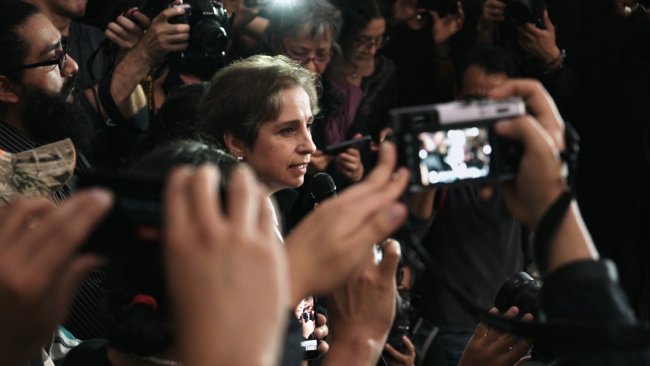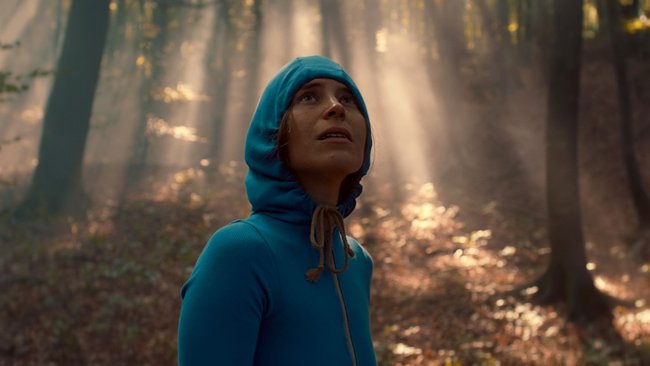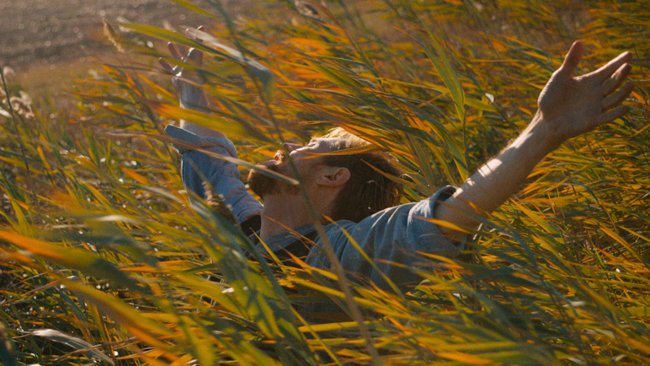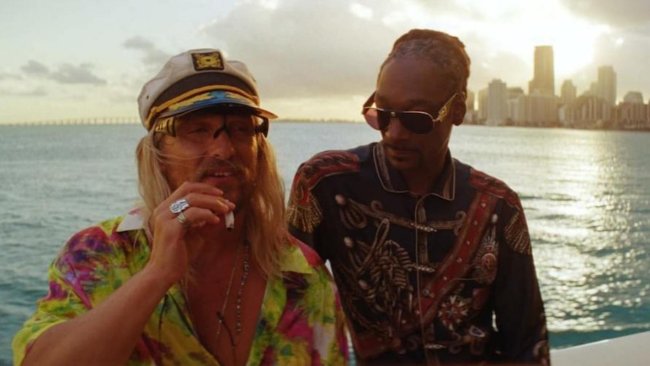The Nose or the Conspiracy of Mavericks
[…] His approach to the past has something of the catalogue, and something of the collage. The surface of his film is a recomposed smattering of images, styles, media, from across the centuries.
[…] Against the backdrop of Stalinist brutality, the proud cacophony of Khrzhanovsky’s animation – its mishmash of signs and references and figures – stands as a joyful parade.
[…] The question, however, remains: what lies beyond these images? A recomposed kaleidoscope, the fantasy of a (re)unified culture? Or is it the playfulness of the postmodern canvas, where images cannot but be allegories of their failure, the hollowed-out words of an impenetrable script?
Text: PM Cicchetti

Dreams are sediments. In the dreamer’s mind, flotsam of lived experience surfaces briefly. Shards of perception meld into fleeting unity, lit by the spark of a shape, perhaps a meaning.
Andrei Khrzhanovsky’s The Nose is similarly sedimentary. The film defies structure and emphasises construction. Its surfaces are not those of neatly-folded origami. Rather, its visual machinery resembles an ebullient stew of languages, modes of address, and symbolic strategies (iconography, narration, performance). Layer upon layer, mixed-in rather than overlaid, its animation burbles with allusions: each frame a nod, a wink, as tides of images wash over the viewer.
Re-ordering
The film opens as live-action, on the tarmac of an airport, with a plane named after Gogol. Onboard are key figures of Russian theatre, cinema and culture, past and present. The voice-over narrator remarks how comforting it is to see all of them travelling «in the same direction». In couples or individually, the passengers watch old classics on the in-flight entertainment screens. The archive of available content seems boundless: as the camera glides across the seats, the small screens allow the viewer to glimpse a kaleidoscope of epochs, of genres, of forms. In the first conversation we hear, a passenger I cannot identify mentions to his companion that the English have compiled a list of books one must read in order to be a civilized man. A faint whiff of humour, already (and at the expense of the English, which is always a plus).
So here we have it: a list (canonical, pragmatic, implicitly finite, imperial), an archive of masterpieces (contiguous yet unrelated bubbles) and a direction of travelling (shared, predetermined). What are these things, really? They are models of legibility. They are principles for the reordering of unordered fragments. Such re-ordering – its promises, its risks, and ultimately its very possibility – is what is at stake here.
A heritage
Or perhaps we can think about this in a different way. Imagine entering a museum; sediments of time and the works of human creativity ordered into a coherent, intelligible whole: a tradition. A heritage. Now imagine entering a ruin. Time growing like moss, spreading in patches across the crumbling debris of what was once a coherent whole. Different centuries overlapping into odd amalgamations. Now think of a film: frames streaming unerringly towards the ending (its implied promises: redemption, conclusion, fullness of meaning) like the beads of a rosary.
After the initial prologue, the film shifts form, from the live-action footage of the plane to animated drawings. A figure of Gogol arrives at St. Petersburg, circa 1828. He begins writing The Nose. Then the film jumps forward. The voice-over narration takes us to the 1920s, as various composers strive towards the same goal: composing a Soviet opera. Dimitri Shostakovich is working on an adaptation of Gogol’s novella. He meets Vsevolod Meyerhold. The prospect of a collaboration begins to take shape. It was not to happen, the narrator informs us – but now, he adds, «all of them can meet in a space without time, or death: the space of art».
Postmodern catalogue/collage
Here already, Khrzhanovsky gives away the name of his game. The Nose is a fantasie, the fulfilment of a historical wish. Lynde Barker, in a recent article, called it a «postmodern political fairy tale». Let us a draw a comparison. In recent years, Quentin Tarantino (himself no stranger to the postmodern label) has also been using cinema to redress and reimagine the past. His, however, remains a linear understanding of history: things proceed apace, until they take a wrong turn. All it takes is for the cinema to nudge the course of events back on its right track: what if.
Khrzhanovsky plays a different game. His approach to the past has something of the catalogue, and something of the collage. The surface of his film is a recomposed smattering of images, styles, media, from across the centuries. Fragments of Sergei Eisenstein’s films play alongside characters in 18th century garb, Sergei Kovalev’s bespectacled nose hides behind a wall of black-suited earpiece-sporting bodyguards, and Soviet avant-garde poster art intersects primitivist iconography.
Beyond the incessant flow of images and visual nods, one senses the echo of something larger: a coherent unity. Alexander Sokurov comes to mind. His methodical (ritual) long takes through the corridors of the Hermitage (Russian Ark) or the Louvre (Francofonia) offer a cinematic allegory, a way (again) of recomposing the wholeness of a culture, through and beyond the museum, through and beyond the pastiche of its visual (painterly, sculptural) remnants.
Vanishing truths
The maker of the dream, the dreamer, has no access to the dream itself. Whatever kernel of truth he or she might glimpse while dreaming, quickly recedes as the dream is performed in recollection. A dream told is a dream straightened and flattened, plastered with language, and with all that lurks within it: power, ideology, order.
Is that what lies beyond Khrzhanovsky’s images, then? The vanishing truth of a civilization? I think of Andrei Rublev, of the legacy of Russian icons, with their rigidly regulated traits. Images as thresholds, between the here and the heavens. Such legacy must weigh heavily on any Russian image-maker, and heavier still on animators, who lack the mechanical excuse of a camera to hide behind.
Perhaps it is not by chance then that, as The Nose progresses, more and more figures of narrators surface. The real-life animators of the film, Khrzhanovsky and his team, seen drawing characters and manoeuvring cut-out figures, Shostakovich, directing the imagined production of his opera from a prompt box at the Bolshoi, and Mikhail Bulgakov, using marionettes to tell his friends the story of the letter he once sent to Stalin. A third of the way through the film, a title-card appears: The Nose, or the Conspiracy of Mavericks, and a subtitle: A Story in Three Dreams.
Redeeming History
To think of history as a progression is to think of history from the perspective of those who have the power to arrange an order, but there are other possibilities. The redemptive spark of utopia, as Walter Benjamin shows, is triggered when (in a moment of danger) the past is reconfigured: the kaleidoscope of history is broken so that the present may reclaim (and redeem) the legacy of the past. To engage in this redemptive recuperation is to recognise the creative gap between trace and meaning, between writing and speech: between the script of the past and the performance of the present.
In the final section of the film, the stories of the different narrators converge. The tale of Bulgakov’s friendship with Stalin leads to the latter attending the same, animated production of Shostakovich’s opera that we saw in the “first dream”. From there, the film follows the sad parable of Zdanovian repression against “formalist artists”, and documents the painful trail of murder in the wake of the Great Purge. The closing of the film is lyrical, even elegiac, as the names of the dead flock through the sky, and we see more planes, once again flying in the same direction.
A blueprint
Against the backdrop of Stalinist brutality, the proud cacophony of Khrzhanovsky’s animation – its mishmash of signs and references and figures – stands as a joyful parade. The temptation, then, is to read the film as part historical wish-fulfilment, part homage to persecuted artists, and part elegy. The question, however, remains: what lies beyond these images? A recomposed kaleidoscope, the fantasy of a (re)unified culture? Or is it the playfulness of the postmodern canvas, where images cannot but be allegories of their failure, the hollowed-out words of an impenetrable script? I suspect neither.
After all, a conspiracy is a blueprint. A schema to bring a different reality into being. Like a script, it exists as mere potential, until execution realises it. By executing the scripts of its various narrators, The Nose gives momentary substance to their dreams; it allows them to exist within the bracketed present of the film. A space without time and death: neither history nor a new canon of civilization, but present nonetheless, and alive - with the hope of a new, shared direction. The kaleidoscope is broken. The conspiracy is underway. The mavericks, I hazard, will have the last word.
This article contains a third-party video. If you would like to watch the video, please adjust your settings.
Watch
Screenings at Festival Fantoche Baden 2020
Info
The Nose or the Conspiracy of Mavericks | Animation | Andrei Khrzhanovsky | RUS 2020 | 89’ | Fantoche – International Animation Film Festival Baden 2020
First published: September 04, 2020



